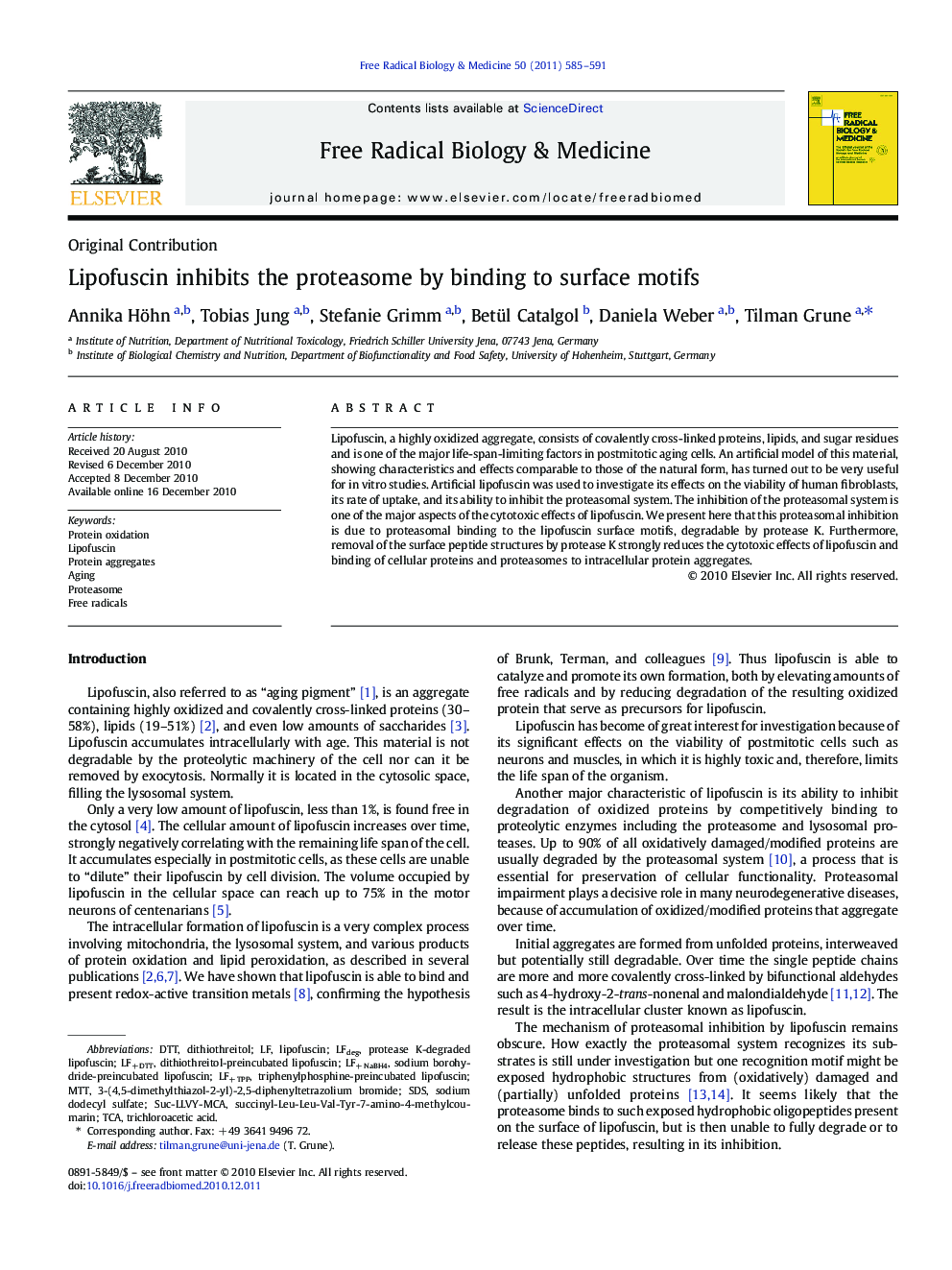| Article ID | Journal | Published Year | Pages | File Type |
|---|---|---|---|---|
| 10738570 | Free Radical Biology and Medicine | 2011 | 7 Pages |
Abstract
Lipofuscin, a highly oxidized aggregate, consists of covalently cross-linked proteins, lipids, and sugar residues and is one of the major life-span-limiting factors in postmitotic aging cells. An artificial model of this material, showing characteristics and effects comparable to those of the natural form, has turned out to be very useful for in vitro studies. Artificial lipofuscin was used to investigate its effects on the viability of human fibroblasts, its rate of uptake, and its ability to inhibit the proteasomal system. The inhibition of the proteasomal system is one of the major aspects of the cytotoxic effects of lipofuscin. We present here that this proteasomal inhibition is due to proteasomal binding to the lipofuscin surface motifs, degradable by protease K. Furthermore, removal of the surface peptide structures by protease K strongly reduces the cytotoxic effects of lipofuscin and binding of cellular proteins and proteasomes to intracellular protein aggregates.
Keywords
Related Topics
Life Sciences
Biochemistry, Genetics and Molecular Biology
Ageing
Authors
Annika Höhn, Tobias Jung, Stefanie Grimm, Betül Catalgol, Daniela Weber, Tilman Grune,
